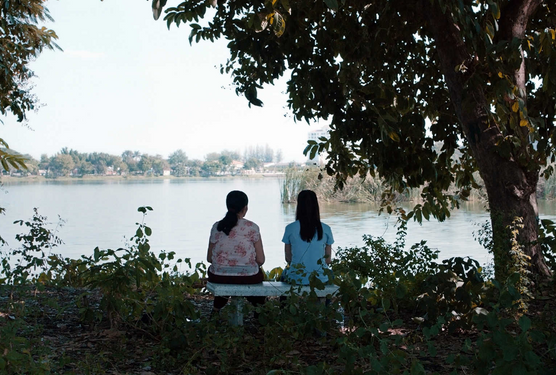Cemetery of Splendour Apichatpong Weerasethakul

Apichatpong Weerasethakul's reported farewell chapter to his native Thailand films is a graceful continuation and culmination of the understated poetic surrealism that brought him international acclaim in Uncle Boonmee Who Can Recall His Past Lives (2010). Dabbling in familiar themes in the Khon Kaen territory now under the oppression of a ruling military junta, Cemetery of Splendour [Rak Ti Khon Kaen] interconnects the director's prior aesthetic recollections – hospitals, communal malaise, native mythology, intense cultural identification, psychic intuition, playful dialogue that sways between naturalism and performance, and calisthenics sequences (of course) – in lengthy formalistic shots filtered through a tender lens. While bearing his own visionary imprint, the director's cryptic inclinations are mitigated by a warm humanity comparable to the magical realism and spirited tone of Katsuhito Ishii's Taste of Tea (2004) and afflictions of the soul in Ulrich Köhler's Sleeping Sickness (2011).
The sensibility of Weerasethakul regular Jenjira Pongpas Widner greatly informs Splendour's inclusive focus on the Thai landscape. As an aging volunteer for a new hospital in a former schoolhouse, Jen patiently tends to comatose soldiers' spiritual ailments with uncommon empathy due to her limited mobility (her short, disabled right leg) and American veteran husband. One of the nurses, Tet (Petcharat Chaiburi), teases Jen about the young, mysterious clairvoyant Keng (Jarinpattra Rueangram), who harnesses the ability to recall the former lives of those she physically touches. And so Weerasethakul ambitiously delves into his country's troubled history in metaphor, where the specters of dead kings beneath the hospital reap the energies of the confined patients' bodies to fuel their battles in correspondence with radiant arched tubes by the bedsides. These color-changing fluorescent fixtures, which initially appear as if they are pure Flavin-inspired art installation, suggest something of a trance-like exorcism, predicting the film's ensuing lectures on healing of the soul and body through lucid dreaming and medicinal cream.

Jen earnestly absorbs the self-possessing discussion of the subconscious, drawing ever closer to one particularly lonely and visitor-less soldier, Itt (Banlop Lomnoi). She projects her desire for companionship and familial reunion onto him, facilitating Splendour's deep immersion in her personal history as well as Itt's own malady. Weerasethakul delicately evokes the possibility of ghostly visitation while further enabling the film to sprawl into seemingly tangential branches that offer hope of reincarnation- a spiritual awakening affecting a physical one. Through these sporadic tête-à-têtes, Jen and Itt's bond deepens, as do the links between psychic Keng and Jen with increasingly vivid visual juxtapositions that blur the real and imagined. A satirically strange projection of a movie trailer, fusing fantasy melodrama with action tropes, alludes to the uninhibited nature of the dream in the nebulousness of time and place, reality and reverie; when Jen and her now surrogate son emerge from its darkened theater, the film cuts to angled Escher-like escalators superimposed with glowing green arches in the womb of the infirmary.
In the film's most fascinating sequence, Keng becomes a cipher for Itt's past life, guiding Jen through an opulent grand hall of the imagination with a golden bathroom and foot basin made of pink stone. Lingering shots on the particular physical spaces in the naturalistic outdoor world of fig trees, orchids, and collapsed temple statues vitalize the eloquent mental images, once more inviting the viewer to consider the potential of cinema as a kind of psychic form in itself much like Keng's gift to conjure unseen worlds to the outsider. As Keng sedately tours Itt's erstwhile environment, Splendour only becomes rooted further in the enigmatic and ineffable. In Kong Rithdee's exceptional review that highlights the enriching dichotomies in Weerasethakul's films of rarefied beauty, he calls this magnum opus a "cinema of telepathy that draws its spirit from the damp earth and strange lore of [Thailand]." Even prior to the initial fade-in, the director drolly addresses conspiracy with tranquil nature sounds succumbing to the noise of a backhoe and stern chatter of man's industry and ruling government. As this recurring, slow-moving scene digs both literally and figuratively into the country's past, the film's ubiquitous sleeping sickness comes to symbolize the urgency of awakening a people's collective (un)consciousness to confront its present ills.
22 December, 2015 - 08:55 — Grant Phipps
